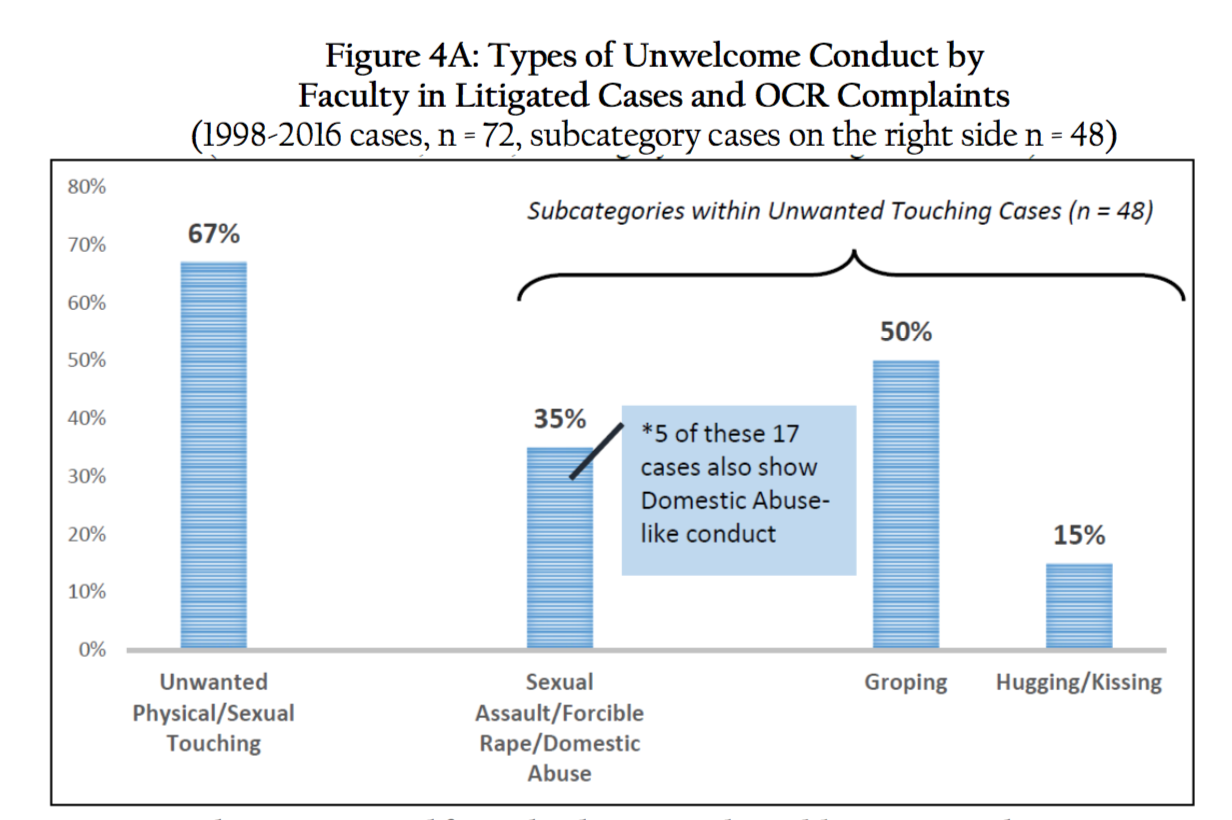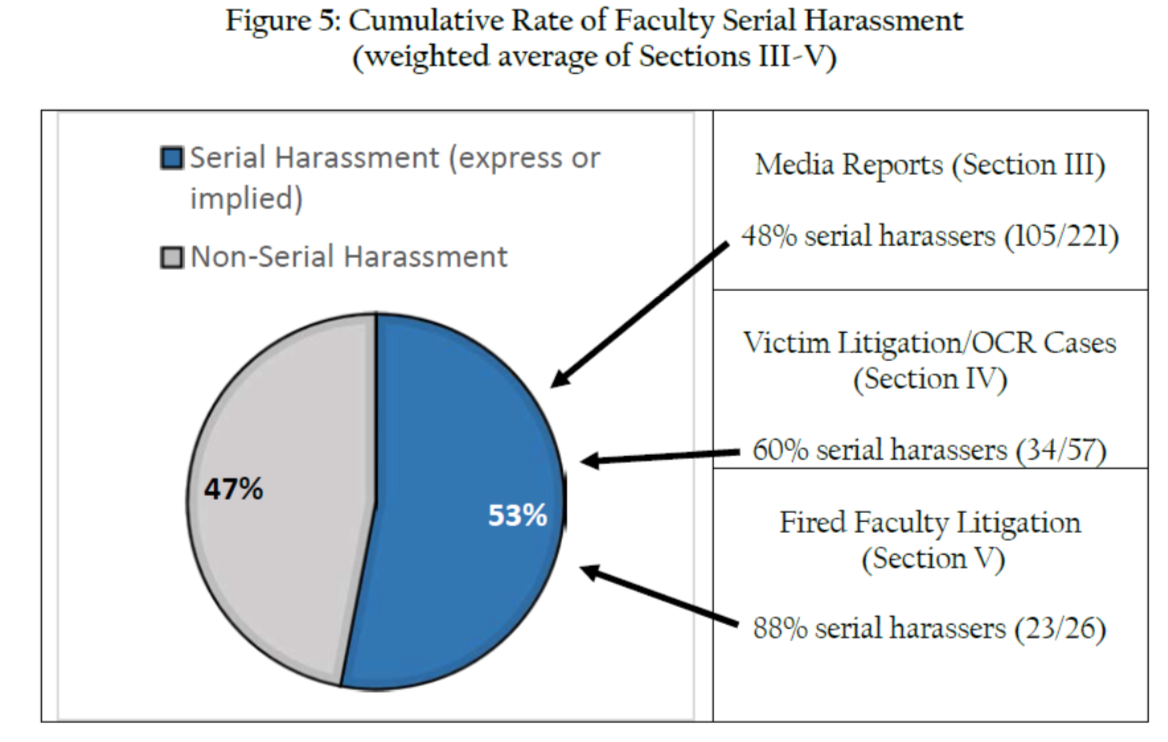You have /5 articles left.
Sign up for a free account or log in.

Geoff Marcy is one of hundreds of alleged harassers of graduate students included in a new study.
Wikipedia
Like many debates about higher education, those about sexual harassment are often based on anecdotes and opinion. To some, male professors in particular are victims in waiting of the PC police anxious to punish a stray comment. To others, faculty harassers are finally being held accountable for sexually predatory behavior toward vulnerable students.
“A Systematic Look at a Serial Problem: Sexual Harassment of Students by University Faculty” seeks to cut through the noise with data, analyzing nearly 300 faculty-student harassment cases for commonalities. The study, which focused on complaints by graduate students, led to two major findings: most faculty harassers are accused of physical, not verbal, harassment, and more than half of cases -- 53 percent -- involve alleged serial harassers.
Data “confirm that faculty harassment of students is more widespread than many may appreciate” says the study, forthcoming in Utah Law Review. Perhaps most importantly, it says, a “disturbingly high proportion of available cases indicate evidence of higher-severity sexual harassment that includes unwelcome physical contact and/or a pattern of serial sexual harassment of multiple victims by the same faculty member.”
In other words, data challenge what the study calls “stereotypes” about sexual harassment, including that the current reporting environment has compromised faculty members’ academic freedom.
That’s a concern held by the American Association of University Professors, though the organization says it has no problem with Title IX of the Education Amendments of 1972, which prohibits gender-based discrimination in education -- just how some campuses apply the law. Others, such as Laura Kipnis, a professor of media studies at Northwestern University and author of Unwanted Advances: Sexual Paranoia Comes to Campus, go a step farther. (Kipnis expressed interest in the new study but declined immediate comment to Inside Higher Ed, citing its length -- some 89 pages.)
To study co-author William Kidder, a research associate at the Civil Rights Project at the University of California, Los Angeles (who doubles as chief of staff to the president at Sonoma State University), the new evidence of serious faculty harassment is persuasive.
“Compared to when I started working on this project over a year ago, the [proportion] of very serious physical contact cases surprised me a little,” he said.
Over all, Kidder said, he and his co-author, Nancy Chi Cantalupo, assistant professor of law at Barry University, “tried to shed more light than heat on the difficult topic.” While the large data set is not a random sample, he added, “the volume of serious physical contact cases” underscores “the seriousness of the sexual harassment issue on campuses across the country and the all-too-real harms that student victims encounter.”
‘Tip of the Iceberg’
Kidder and Cantalupo say their effort to inventory faculty-student harassment cases is the most comprehensive yet, taking data from news reports, federal civil rights investigations from the Education and Justice Departments, lawsuits by students alleging harassment, and lawsuits by tenure-track or tenured faculty professors fired over alleged harassment. The study is based on reports involving graduate students, who are, according to other data, more likely to be harassed by professors than are undergraduates (among whom peer-to-peer harassment is more commonly reported).
For data contained in media reports, the authors turned to the Not a Fluke webpage maintained by Julie Libarkin, a professor of geological sciences at Michigan State University. It includes only cases in which there’s been an institutional or legal finding of misconduct or a settlement, or a professor’s resignation (or death) during the review. That turned up 221 cases against faculty members at 210 institutions, the overwhelming majority of which occurred since 2000.
Kidder and Cantalupo then sorted the reports based severity of conduct, from unwelcome comments to unwanted groping to behavior that could violate criminal laws, such as sexual assault, domestic violence or stalking. They also considered whether the harasser was alleged to have targeted multiple students. Some 51 percent of the cases included unwelcome sexual contact, from hugs and kissing to criminal rape. But just 8 percent of the physical cases involved the lesser contacts of kissing and hugging, while 45 percent involved allegations of sexual assault, stalking or domestic violence.
Among the cases gathered in news reports, 48 percent included allegations of multiple victims over time. One such case is that of astronomer Geoff Marcy, who allegedly harassed students on several campuses before his fall from grace at UC Berkeley. Ten cases suggested that institutions had “passed the harasser,” or let a known harasser move on to another campus.
The authors used similar methods to analyze recent court cases involving student plaintiffs and faculty defendants, which left them with 35 cases that discussed the accusations in sufficiently helpful detail; each of these cases also included some evidence of the students’ claims. Kidder and Cantalupo also then analyzed dozens of resolution letters from federal agencies that handle sexual harassment complaints, namely the Education Department’s Office for Civil Rights. Findings were similar to the news sample.
 Source: Kidder and Cantalupo
Source: Kidder and Cantalupo
Last, the authors analyzed several dozen cases in which faculty members had been terminated for alleged sexual harassment and sued their institutions, dating back to 1978. The terminations were upheld in 20 cases, while courts sided with professors in six.
According to the study, these sources confirm “that most faculty whose conduct meets the definition for sexual harassment tend not only to initiate physical contact with the student(s) they are reportedly harassing, but that the physical contact initiated tends to be more ‘severe,’ to use the terminology of sexual harassment law.”
Citing outside research on what constitutes high-“intensity” harassment that generates stronger emotional reactions among victims, the study notes that a number of those factors (perpetrators who possess power, physical contact, and behavior that leads to fear over mere annoyance) are present in the data.
Again, 53 percent of all cases studied involve a professor who is alleged to have harassed more than one student. That finding, too, challenges some stereotypes about a reporting environment in which male faculty members are vulnerable to singular, career-ending missteps.

While the data are not randow, they represent just “the tip of the iceberg” in terms of sexual harassment, the authors say, since plenty of reported cases remain confidential and still many more go unreported.
Jennifer Freyd, a professor of psychology at the University of Oregon and an expert on harassment and assault, called the study “important” and -- like its authors -- noted that it’s based only on cases that have made it into “the system.”
For that reason, Freyd added, rates of harassment involving physical contact may be overrepresented in the study, since “if you are a victim of verbal harassment only, you may be less inclined to tell anyone, never mind file a lawsuit.” And figuring out every day rates of repeat harassment is even harder, she said.
Freyd's own survey of graduate students on her campus found that 38 percent of female respondents had been sexually harassed by a faculty or staff member. Based on that and other, existing data, she said, what's clear is that harassment by faculty and staff members is “prevalent and damaging.”









